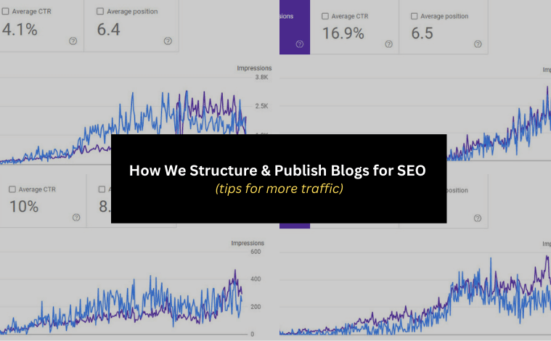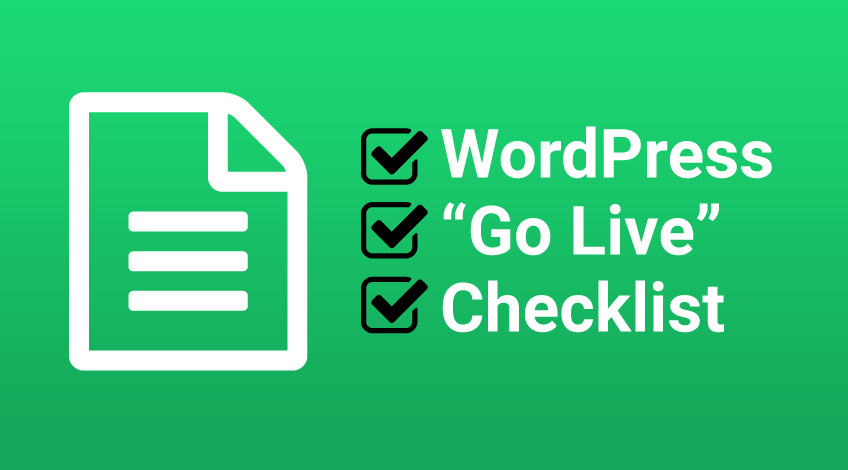
I’m a big fan of following set procedures, especially when it comes to important tasks.
It saves me having to remember a load of things I need to do, and makes sure I don’t miss anything off.
So whenever I do something I know I’ll need to do again, I always try to take a few minutes out at the end to write down everything I done.
That way when I need to do it again I have it all written down and I don’t have to rack my brains for anything.
So here’s my own personal checklist that I use on almost every project to ensure as little as possible goes wrong.
This assumes you have already tested the site and it’s just a case of “going live”.
If you’re in a rush, here’s the short version:
How To Go Live With A WordPress Website
Going live with your WordPress website should take you around 30 minutes. You will need Google Search Console, Bing Webmaster Tools, Google Analytics and Yoast SEO.
- Ensure the site can be indexed by Google
Make sure you uncheck the “Discourage search engines from indexing this site” option by going to Settings > Reading. - Ensure the contact forms are set up to go through to the clients email address
Make sure you switch your contact forms over to the client’s email when the site goes live. To change it in Contact Form 7, go to the “contact” section in the WordPress admin sidebar, select your form, and click on the “mail” tab, then change this to the client’s email address - Install Yoast SEO
To install Yoast SEO, go to Plugins > Add new, search for “yoast seo”, and click “Install Now”. Then go to SEO > Dashboard, click the “Features” tab, enable “Advanced settings pages”, and save changes. Yoast SEO generates title tags and meta descriptions based on page content, so no need to set them individually. Even without an SEO contract in place with the client, it’s recommended to install Yoast SEO, the essential plugin for WordPress that simplifies complicated tasks. - Set up sitemap in Yoast
With Yoast SEO, you can easily create and update a sitemap by going to SEO > XML Sitemaps. Pay attention to the “Post types” and “Taxonomies” tabs, including everything that exists on the website and excluding what doesn’t. For example, exclude “posts” and Categories, Tags, and Format if there’s no blog. Properly setting up the sitemap prevents having strange-looking pages in the SERPs. - Submit sitemap to Google Search Console & Bing Webmaster
To submit to Google, go to Crawl > Sitemaps and click “ADD/TEST SITEMAP”, then paste “sitemap_index.xml” and click “submit”. To submit to Bing, add your website and paste the entire URL to your sitemap “YourWebsiteHere.com/sitemap_index.xml”, then verify ownership as prompted. Both actions effectively ask the respective search engine to index the pages in your sitemap. Google Search Console and Bing Webmaster are useful free tools for checking how your website is performing in their search engines, providing information on search terms, links, errors, popular pages, visitor countries and devices, and more. Submitting your sitemap is the most important feature for this guide, and can be done easily. - Set up Google Analytics
To add Google Analytics, log into Analytics and click “ADMIN”, select or create a new account for the client, then create a new property with website details and click “Get Tracking ID”. Copy the code and paste it into your WordPress themes header.php file before the opening tag. Adding Google Analytics to the website during the “go live” process is a great extra step, even without an SEO contract. It’s quick, helps the client, and shows you’re on top of things. By adding the website to your Google Analytics account, you can share access with the client and provide data from the website’s beginning.
Full Step-By-Step Details When Going Live
Let’s now have a look at each of those steps in more detail and look at an additional bonus step that’ll help the website get indexed faster:
Step 1: Ensure the site can be indexed by Google

During the development process it is very likely that you checked the box “Discourage search engines from indexing this site” inside the WordPress backend.
If the site goes live and you still have this setting checked, you are telling Google not to index the website.
Ensure this setting is not checked by going to Settings > Reading
Step 2: Ensure the contact forms are set up to go through to the clients email address
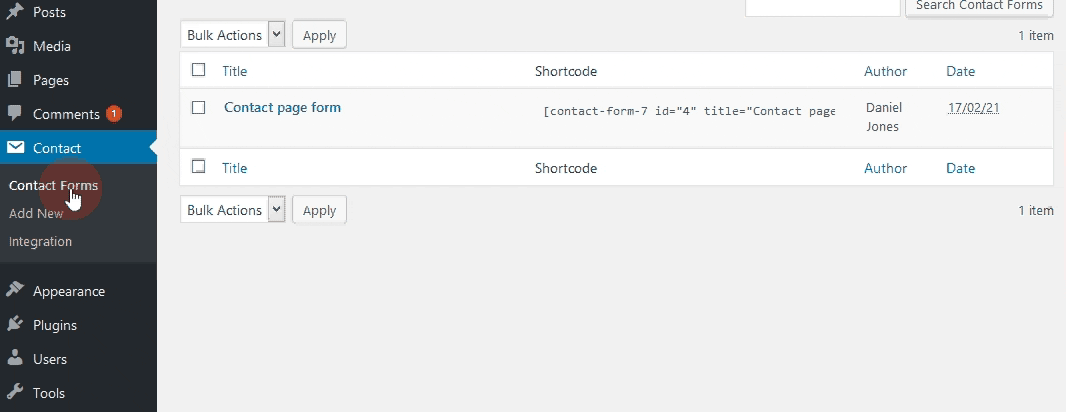
Whilst developing the site you will have likely set up the contact form to go through to your personal email address.
Ensure that you have changed this email address over to the clients when you go live.
If you are using Contact Form 7, this can be done by clicking on “contact” in the WordPress admin sidebar, selecting your form from the list and clicking on the “mail” tab at the top.
Step 3: Install Yoast SEO
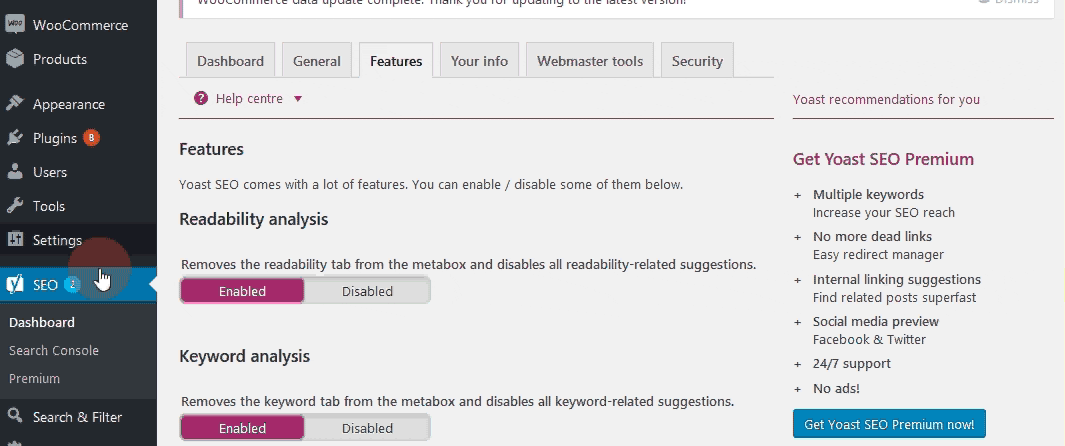
Even if you don’t have an SEO contract in place with the client you should install Yoast SEO.
I believe Yoast is the most essential plugin for WordPress as it handles some pretty complicated stuff without you having to do anything.
To do this simply go to Plugins (in the admin sidebar) > Add new and search “yoast seo”. When it comes up simply click “Install Now”.
That will then take you to another page where you have a button to activate the plugin.
But wait, you aren’t done yet…
Next you need to go into SEO > Dashboard, and click on the “Features” tab.
From here, scroll down to where it says “Advanced settings pages”. Click enable and then click “Save changes” at the bottom
At this point you could go through the site and set all the title tags, meta descriptions etc. But to keep this as an essential go live only guide, you can bypass this step. Yoast SEO will generate its own title tags and meta descriptions based on your pages content.
Step 4: Set up sitemap in Yoast
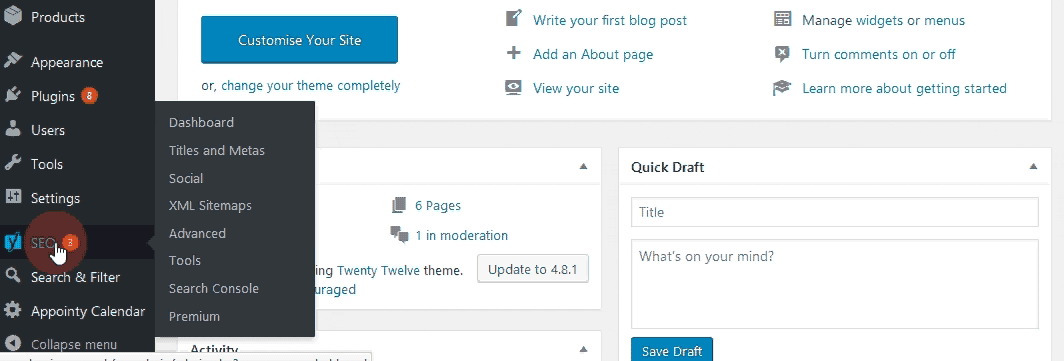
Creating a sitemap is often forgotten about in web design. It’s not likely to effect the look or functioning of a website so people often overlook its importance.
But you shouldn’t overlook a sitemap because it tells Google which pages you’d like it to index.
And you can easily set up your sitemap in Yoast SEO’s settings.
The sitemap Yoast SEO creates is brilliant. It automatically updates whenever you add a new page/post and is really easy to set up.
Simply go to SEO (in the admin sidebar) > XML Sitemaps.
From there you will want to set up what to include in your sitemap.
Most commonly I will exclude Author / Users as I wont be using the users in a way that it would be beneficial for Google to index the pages, this is done by clicking on the “User Sitemap” tab and ensuring you have “disabled” selected.
The two tabs you want to pay most attention to are the “Post types” and “Taxonomies” tabs.
What you will include in these two tabs is entirely down to the project. But a good rule of thumb is – if it exists on the website, include it. If it doesn’t exclude it.
So if your WordPress website doesn’t have a blog (for some reason), you will want to exclude “posts” from the “Post types” tab and Categories, Tags and format from the “Taxonomies” tab.
Note: I place on emphasis going through the tabs properly because I see so many people doing this wrong and end up having weird looking pages in the SERPS.
Step 5: Submit sitemap to Google Search Console & Bing Webmaster
Google search console (previously known as Webmaster tools) and its Bing equivalent “Bing Webmaster” are incredibly useful free tools that give you insight into how your website is performing in their search engines.
It gives information like:
- Search terms that people used to find your site
- Links to your site
- 404 errors
- Your most popular pages
- Countries people are visiting your site from
- Devices people visit your site on
- And more…
But the most important feature they both have for this guide is the ability to submit your sitemap.
So first lets go ahead and submit your sitemap to Google Search Console.
Submit sitemap to Google Search Console
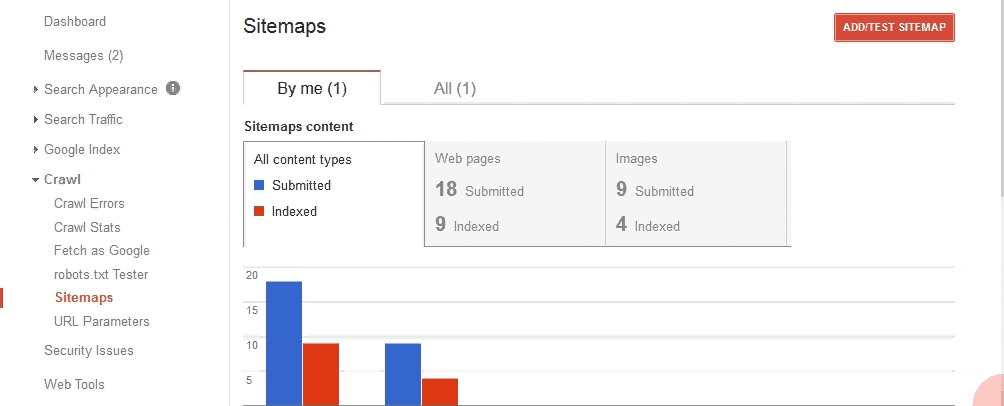
First go to https://www.google.com/webmasters/tools and click the red “Add a property” button.
That’ll load up a box where you need to put in your web address (homepage address i.e your-website.com, not the sitemap).
Click “Add” and it’ll load up a new page where you have to prove you have access to the website (this is to stop your competitors stealing your websites data).
I usually go with the upload HTML file to root option as it’s the easiest.
Once you’ve confirmed your ownership you should then be able to see the stats for your website. Obiuosky there will be no data for now as you have only just added the website.
So to add your sitemap go to Crawl > Sitemaps.
On the top right you should see a red button that says “ADD/TEST SITEMAP”.
Click this and paste in “sitemap_index.xml“.
Simply click submit and you’re done. You have effectively asked Google to index the pages in your sitemap.
Submit sitemap to Bing Webmaster
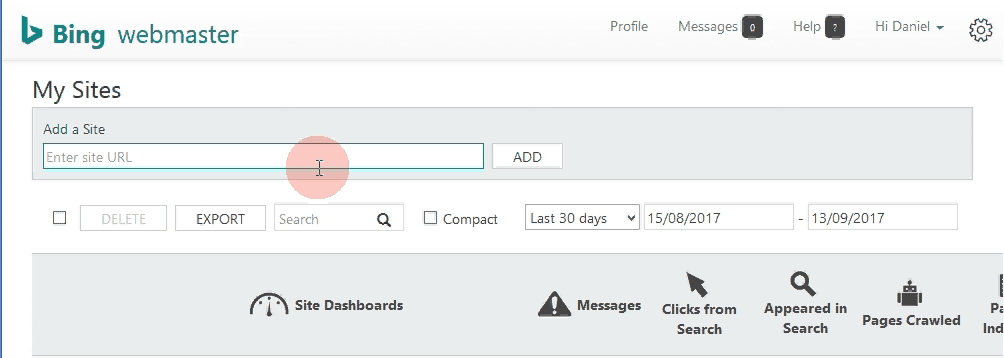
This is something Bing will actually encourage when you add your site to Bing Webmaster.
Simply login to Bing Webmaster and at the top you will see a gray box that says “Add a site”.
Paste your website address into the input field and click the white “ADD” button.
It will then redirect to a new page where it will ask you to submit your sitemap.
This time you want to submit the entire URL to your sitemap which is: “YourWebsiteHere.com/sitemap_index.xml”. Then click “ADD”.
You will now be asked to verify your ownership (like Google Search Console did).
Again verify in any of the methods it offers and you are done. You have effectively asked Bing to index the pages in your sitemap.
Step 6: Set up Google Analytics

Again, even if you don’t have an SEO contract in place I would still advise you add Google Analytics to the website as part of the “go live” process.
- It doesn’t take long
- It can be a massive aid to your clients
- It’s going the extra mile
- And it’s one of those little things that just shows how on top of things you are
So if you add the website to your Google Analytics account as soon as it goes live – you will be able to share access with the client (if you want to or they ask) and give data all the way back to the websites birth.
To add the website to Google Analytics log into your analytics account and click on “ADMIN” (in the left hand sidebar).
You should then see 3 columns:
- Account
- Property
- View
The account column lets you select the account you want to add the client to. So select the account or make a new one called “clients”.
Next on the Property column, click on the select box and click “create new property”.
That will redirect you to a new page with a simple form asking for your website name and URL, which country you are in and your industry.
Once you’ve filled that in click on the blue button that says “Get Tracking ID”.
That will take you off to a new page that should have some code on it that looks something like this:
<!-- Global Site Tag (gtag.js) - Google Analytics -->
<script async src="https://www.googletagmanager.com/gtag/js?id=UA-79928600-2"></script>
<script>
window.dataLayer = window.dataLayer || [];
function gtag(){dataLayer.push(arguments)};
gtag('js', new Date());
gtag('config', 'UA-79928600-2');
</script>
Copy the code from the analytics page and paste it into your WordPress themes header.php file before the opening <body> tag.
Note: do not copy the code from above and paste that into your header file, that’s just an example and will not work. Your code will be slightly different.
BONUS – Step 7: Build at least one backlink to the website
If you can build an easy backlink to the website, do so. I’ve read a lot of articles and seen a lot of videos where people argue from both sides.
And in my time testing different methods all I can say is this…
Having even one backlink to a website speeds up the time it takes Google to index it.
Google’s robots crawl the internet by navigating through links.
So if the ‘bot is crawling a website and it finds a link to your clients site, it will crawl that too.
So I’m not saying to go ahead and do a load of link building.
Or spend much time on this at all – this whole “go live” process should take you no longer than half hour.
So for example, you could post a link on your social media platforms announcing the launch of your clients new website.
Or you could ask the client to promote their new website on their social media.
And just to point out here (before someone gets the hump), a single link from these places isn’t going to boost your clients website rankings, I’m not advising you do it for that…
It’s just about getting the site “out there”.
Final words
So that’s it, hopefully this will help you speed up your go live process and make sure nothing is missed off.
I’d advise you print it off the list and stick it in the back of your project folder (if you do anything like that) so that when you come to the end of the project you know exactly what needs to be done.
Let me know what you think of this list. Is there anything else you’d add in? Drop it all in the comments section below.
Dan.

